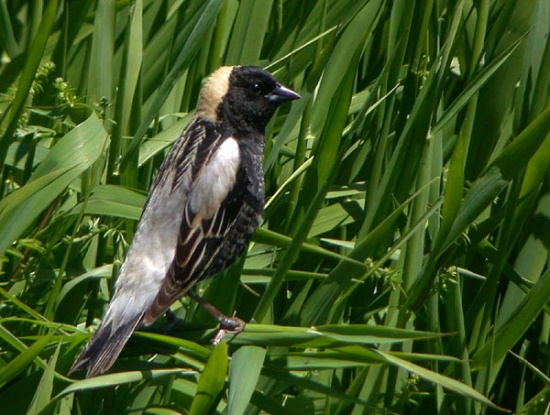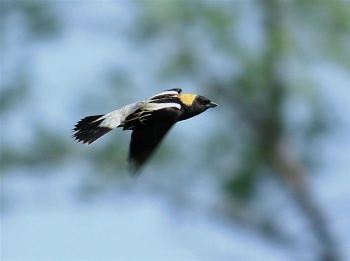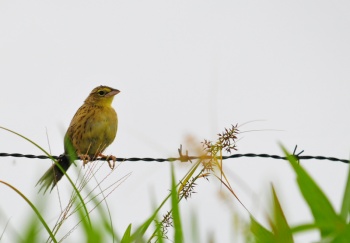- Dolichonyx oryzivorus
Identification
16-18 cm.
Male - mostly black, cream napes, white scapulars, lower backs and rumps.
Female - mostly light brown, black streaks on back and flanks, dark stripes on the head, dark wings and tails.
Similar Species
Female and non-breeding male resemble a female House Sparrow, though yellower.
Distribution
Breeds northern United States and southern Canada west to eastern British Columbia, Washington and Oregon.
In migration found throughout the south-eastern United States.
Rare to casual vagrant on the south-western United States. Accidental vagrant north of range.
Winters in Central and South America.
Rare autumn visitor to Europe.
Taxonomy
This is a monotypic species[1].
Two subspecies are recognised by some authors: Dolichonyx oryzivorus oryzivorus and Dolichonyx oryzivorus albinucha[2]
Habitat
Farmland, large hay and stubble fields; meadows, marshes and prairie. Perches in reeds and bushes.
Behaviour
Breeding
They build a cup shaped nest on the ground, hidden in vegetation, and 5-6 eggs are laid.
Diet
The diet includes seeds and insects.
Vocalisation
Call: a metallic pink.
References
- Clements, J. F., T. S. Schulenberg, M. J. Iliff, D. Roberson, T. A. Fredericks, B. L. Sullivan, and C. L. Wood. 2018. The eBird/Clements checklist of birds of the world: v2018. Downloaded from http://www.birds.cornell.edu/clementschecklist/download/
- Avibase
- Collins Field Guide 5th Edition
- Collins Bird Guide ISBN 0 00 219728 6
Recommended Citation
- BirdForum Opus contributors. (2025) Bobolink. In: BirdForum, the forum for wild birds and birding. Retrieved 13 May 2025 from https://www.birdforum.net/opus/Bobolink
External Links
GSearch checked for 2020 platform.






